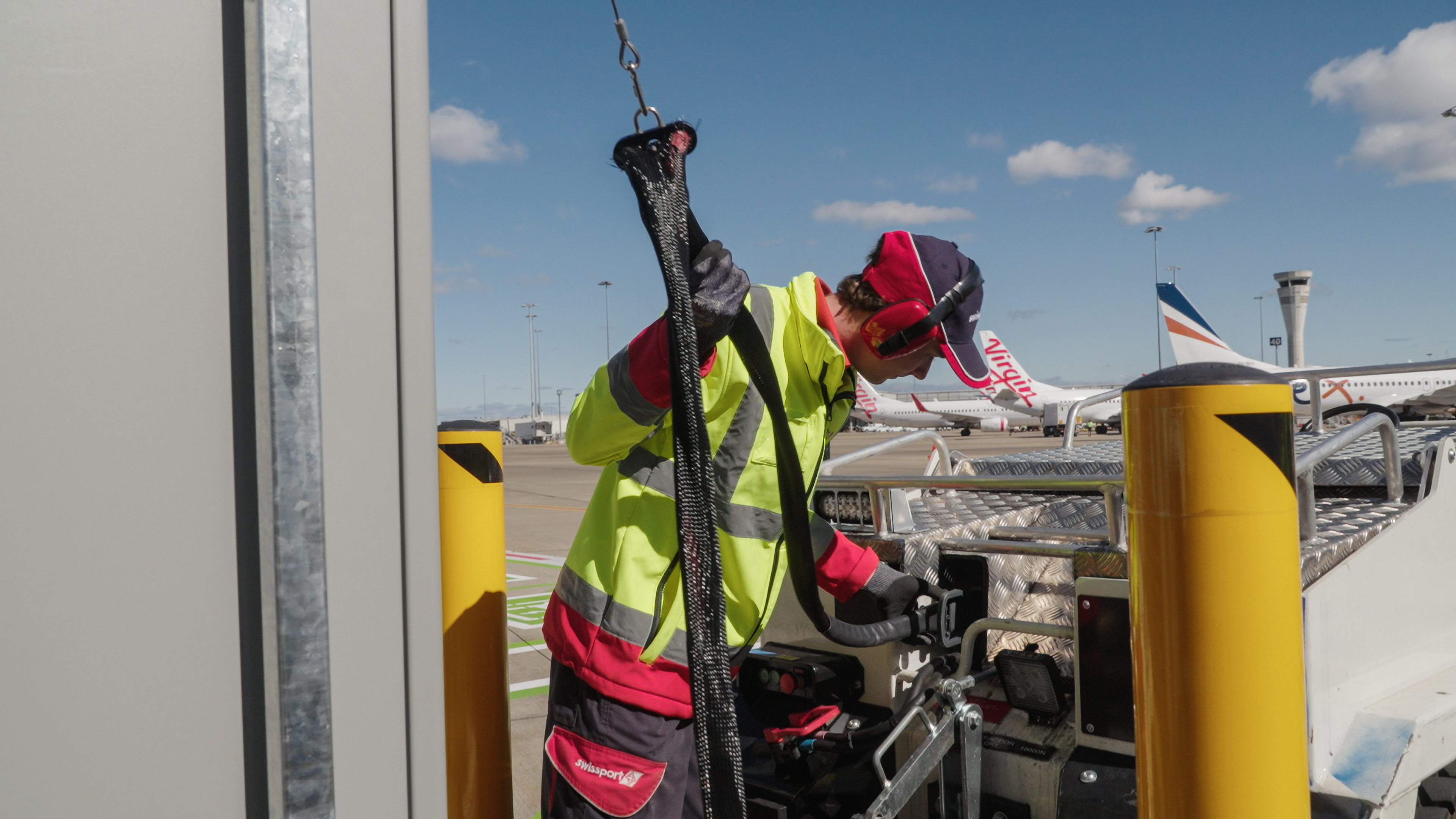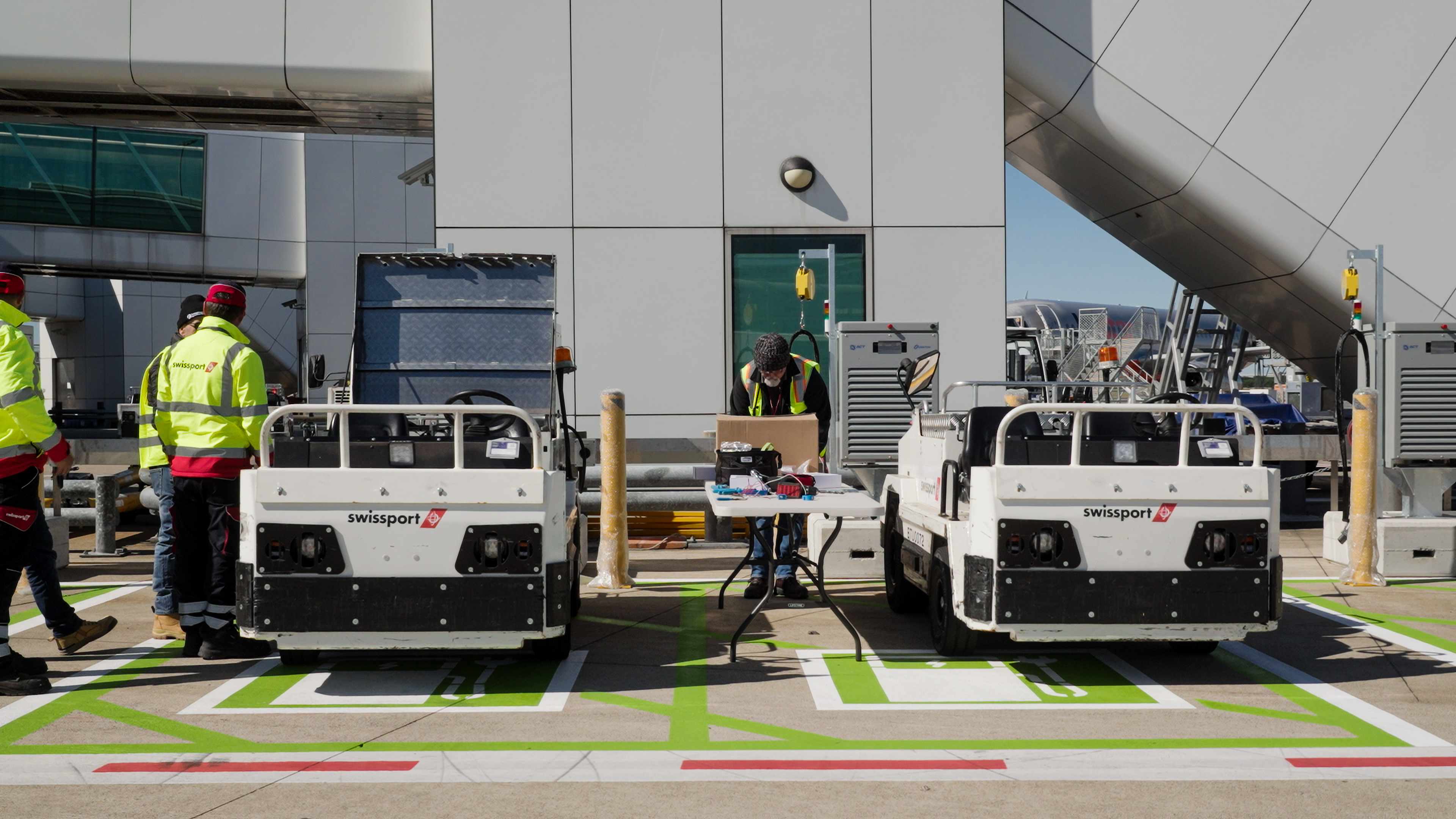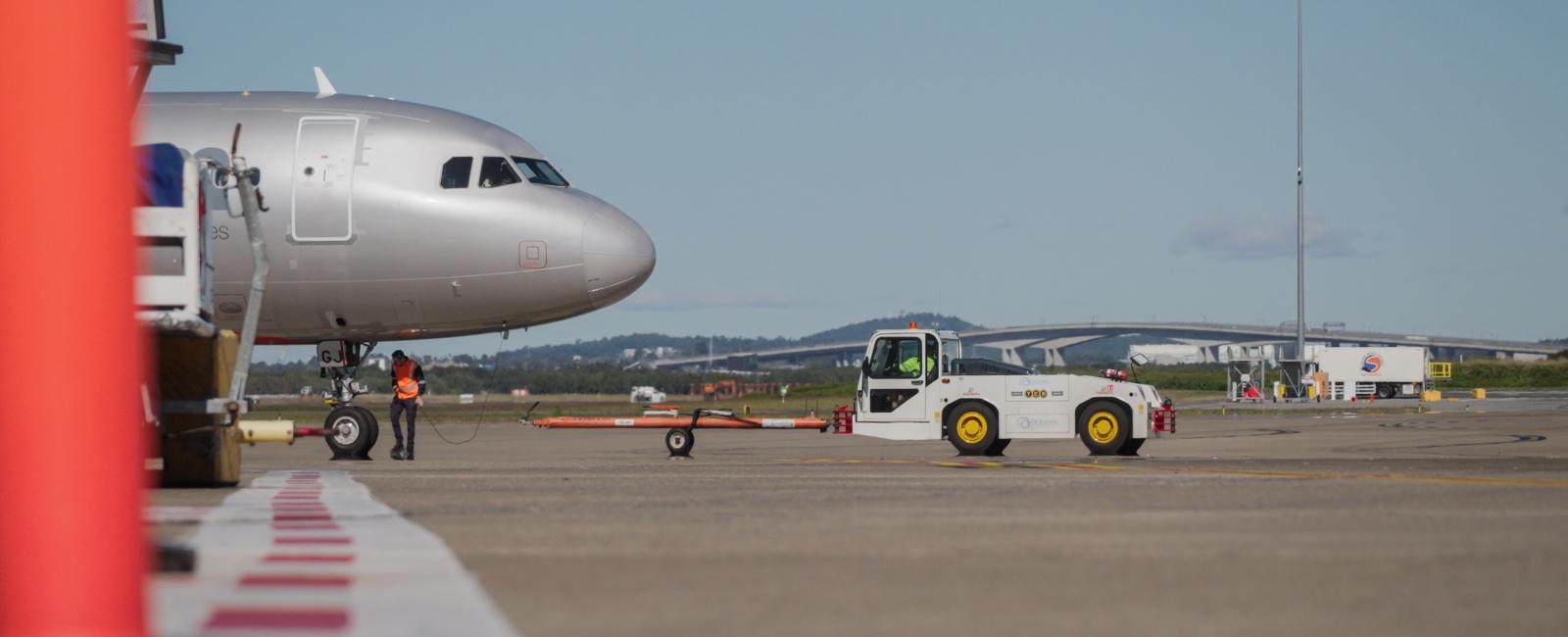
Brisbane Airport is the first Australian airport to install a common-use ground support equipment charging system in an airside environment. This initiative, one of many Future BNE transformation projects, will see 35 chargers initially installed, with plans to expand to 100+ chargers in the future, reflecting the airport's commitment to sustainability and operational efficiency.
When it came to choosing the right chargers, Brisbane Airport knew they needed something reliable and innovative. Matt Gorman, Senior Project Manager for Development shared, “We wanted a product that could meet our demanding hardware operational needs for availability and reliability with strong local support and provide real-time data insights.
“To find a solution to meet our unique airside environment needs we managed a thorough tender process, before finally landing with Freightquip and Advanced Charging Technologies (ACT). ACT chargers are proven in other airports worldwide, so there is a track record of success and they’re easy to use and quick to repair. Plus, they give us valuable data to optimise usage and help users manage their fleets better."
Brisbane Airport’s goal is to meet the needs of ground handlers and airlines while also advancing its sustainability goals and modernising airport operations. Costel Mustatea, Development Manager Utilities, said, “Because airports are so unique, standard models used elsewhere didn’t fit, so we had to develop a tailored solution.”
Scott Collins, Manager, Aviation Projects at Freightquip has been working with Brisbane Airport for the past 18 months to find and deliver a best-in-class solution that satisfies the airport’s unique needs.
“Airports are an incredibly complex and dynamic environment, both from its high-energy daily activity and its ever-evolving technology, including the equipment that it utilises. Brisbane Airport has many ground handling and airline customers requiring charging facilities for their ground service equipment (GSE). The decision to provide charging facilities across the airport is a testament of their forward-thinking approach. Freightquip and ACT rose to the challenge, to make sure that the system can charge the batteries of the wide variety of equipment,” Scott said.

Scott continued to explain the benefits of the technology, “Brisbane Airport will know the identity of equipment that is being charged, where, when and how much energy was used.”
This project fits perfectly with the airport's broader sustainability and innovation targets. It’s about reducing emissions, improving energy efficiency, fostering technological advancement, enhancing regulatory compliance, and potentially cutting long-term operational costs. Costel elaborated,
“These efforts contribute to a more sustainable and environmentally friendly aviation operation.”
The first phase of the project focuses on smaller GSE, like baggage trolleys, which are easier to switch to battery power. Avtar Dhillon, Project Manager for Development & Delivery, said, “These smaller machines can run a full shift on one charge, so there’s no impact on flight turnaround time. As the market matures and larger electric equipment becomes available, we’ll expand our charger fleet accordingly.”
One of the biggest challenges has been finding space for the chargers. Matt explains, “When we install a charger bay, it takes away space from something else. But we’ve had fantastic collaboration from the airfield and terminal operations teams and the ground handlers to minimise the impact. Everyone is excited to be part of this important sustainability initiative.”
The benefits of this project are numerous. Electric GSE generally cost less to operate than diesel equivalents as electricity prices are more stable and predictable than fluctuating diesel prices. Plus, electric engines require less maintenance and have fewer moving parts, which reduces overall maintenance costs.

The switch to electric also means less noise pollution, creating a quieter environment for passengers and employees. Electric motors are more efficient than internal combustion engines, making ground handling operations also more effective.
Additionally, electric motors are more reliable and last longer than diesel engines, with fewer mechanical failures and lower repair costs over their lifespan.
Costel believes this project will influence other airports. “Airports in Australia and around the world are at different stages of electrification. The Brisbane Airport project aims to advance universal airport standards and provide perspective on establishing a unified charging infrastructure that benefits all airport stakeholders.”
Scott adds, “This journey first started at the data gathering and development phase and continues as we deliver and activate the chargers. It won’t end there as this is a long-term relationship and commitment from both parties to maintain the charging performance. I feel a good business relationship has developed and have confidence that it will only get stronger in the future.”
Avtar reflected on a memorable moment from the project, highlighting the collaboration with other Brisbane Airport infrastructure projects.
“Minimising stakeholder impacts during the eight board shutdowns and ensuring no disruption to airport users and stakeholders was a standout achievement. I’ve delivered many infrastructure projects at Brisbane Airport, but the electrification of the GSE is new to both Brisbane Airport and myself. It’s been a great learning experience while doing what I do every day.”

